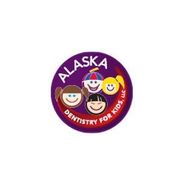Common Questions Parents Have About Teeth Brushing

Proper brushing habits are essential to maintaining excellent oral hygiene. If you want to teach your child how to brush their teeth correctly, it’s important to know the facts yourself. To help you promote dental health in your family, here are the answers to the most commonly asked questions about tooth brushing.
A Guide to Tooth Brushing
What type of toothbrush is best?
There’s an almost overwhelming variety of toothbrushes to choose from, each asserting its own oral hygiene benefits. No matter what it looks like, the most important feature to look for is soft bristles. Hard-bristled brushes can wear away at enamel and cause your gumline to recede over time. Research also suggests that electric toothbrushes are more effective in removing plaque than manual brushes.
How long should you brush?
Brushing your teeth is not the most exciting activity, so many people—especially children—end up cutting their sessions short. However, you need to brush your teeth for at least two minutes to properly remove plaque buildup. To help your child get a full cleaning, look for electric toothbrushes or mobile applications that play two minutes of their favorite songs.
When should you brush?
 According to the American Dental Association (ADA), you should be brushing your teeth twice a day. For most people, brushing once in the morning and again before bed is enough.
According to the American Dental Association (ADA), you should be brushing your teeth twice a day. For most people, brushing once in the morning and again before bed is enough.
Try to wait at least an hour to brush after eating. This is especially important if you’re eating or drinking acidic foods and beverages, such as orange juice, grains, and fish. Acids weaken the enamel on your teeth, so if you brush right away, you could risk removing it.
What is the best method for brushing?
To get a comprehensive clean, the ADA suggests holding your toothbrush against your gumline at a 45-degree angle. Brush with short, gentle strokes as you move back and forth on the outside surfaces of your teeth. Use the same back-and-forth motion on your chewing surfaces, then hold the toothbrush vertically and apply up-and-down strokes to reach the inner surfaces of your teeth. Remember to brush the tongue to remove food debris and bacteria before you rinse.
When should you replace your brush?
Over time, your toothbrush will begin to wear out. You should replace it when the bristles start to fray or after about 3 months. Get a fresh toothbrush as soon as possible if you’ve been sick. If you have an electric toothbrush, check the directions to see how often you’ll need to replace the head.
Fortify good oral hygiene habits with the help of Alaska Dentistry for Kids. This Anchorage pediatric dentist offers comprehensive dental care in a comfortable, welcoming environment. Their team goes above and beyond to accommodate your little one’s unique needs, whether they need treatment for tongue tie syndrome or an extra gentle teeth cleaning. Visit them online for more information about their services and commitment to personalized care. To schedule your child’s first appointment, call (907) 274-2525.
About the Business
Have a question? Ask the experts!
Send your question

